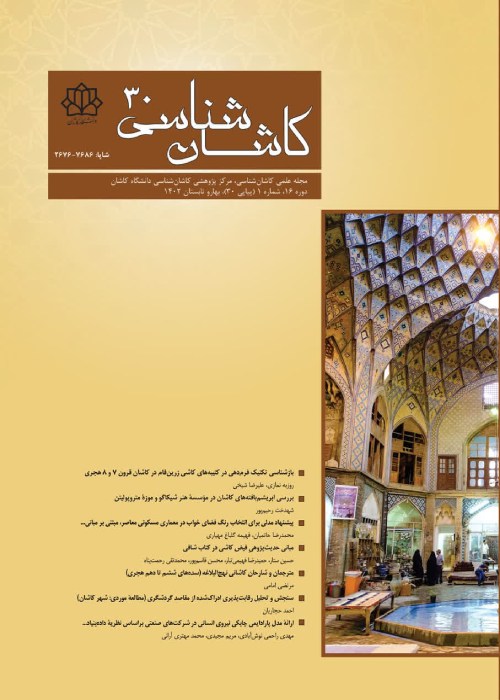Study of four dialects of Kashan (AbuZaydAbadi, Barzoki, Totmachi, Qohrudi)
Author(s):
Article Type:
Research/Original Article (ترویجی)
Abstract:
There are almost lots of dialects in mountainous and desert regions of Kashan. Based on the linguists classification, all of these dialects are segments of central region dialects of Iran. Central dialects of Kashan, like the other Persian dialects, have appropriately maintained numerous properties of Dari, Pahlavi, and even old Persian language. Even now, the vav e madule (altered letter vav; the letter vav which is now written but not pronounced) is used in some words of these dialects. Beginning vowels have also been maintained in some words. Grammatical gender is indicated in some nouns by the signs ā (masculine) and e (feminine). In AbuZaydAbadi, in addition to masculine and feminine nouns with signs, the nouns without signs also reflect grammatical gender indicated by the adjectives and verbs. In other dialects, grammatical gender rules are not followed thoroughly. Moreover, some of verbal structures have influence on making masculinity and femininity. Prepositions in these dialects reveal in positions of prefixes or suffixes, or both. The preposition rā often means for and functions as direct object indicator. Grammatical indirect objects in these dialects are usually without any indicator. The arrangement of sentence parts is the same as present speaking Persian one and occasionally looks like dari Persian sentence arrangement. Four forms of personal enclitic with different positions and functions are recognizable in these dialects. These enclitics, besides their main role, do the actions of transitive past verbs. Some of the enclitics are subjective and appear, like in the usual Persian, at the end of verbs. These enclitics can demonstrate also objective or complementary functions in informative or subjunctive present tense verbs. The past continuous tense verbs are made by special identifiers placed such as prefixes at the beginning of verbs. The ergative structure is particularly used in AbuZaydAbadi.
Keywords:
Language:
Persian
Published:
Kashan Shenasi Journal (Studies on Kashan), Volume:10 Issue: 2, 2018
Page:
138
magiran.com/p1846849
دانلود و مطالعه متن این مقاله با یکی از روشهای زیر امکان پذیر است:
اشتراک شخصی
با عضویت و پرداخت آنلاین حق اشتراک یکساله به مبلغ 1,390,000ريال میتوانید 70 عنوان مطلب دانلود کنید!
اشتراک سازمانی
به کتابخانه دانشگاه یا محل کار خود پیشنهاد کنید تا اشتراک سازمانی این پایگاه را برای دسترسی نامحدود همه کاربران به متن مطالب تهیه نمایند!
توجه!
- حق عضویت دریافتی صرف حمایت از نشریات عضو و نگهداری، تکمیل و توسعه مگیران میشود.
- پرداخت حق اشتراک و دانلود مقالات اجازه بازنشر آن در سایر رسانههای چاپی و دیجیتال را به کاربر نمیدهد.
دسترسی سراسری کاربران دانشگاه پیام نور!
اعضای هیئت علمی و دانشجویان دانشگاه پیام نور در سراسر کشور، در صورت ثبت نام با ایمیل دانشگاهی، تا پایان فروردین ماه 1403 به مقالات سایت دسترسی خواهند داشت!
In order to view content subscription is required
Personal subscription
Subscribe magiran.com for 70 € euros via PayPal and download 70 articles during a year.
Organization subscription
Please contact us to subscribe your university or library for unlimited access!


